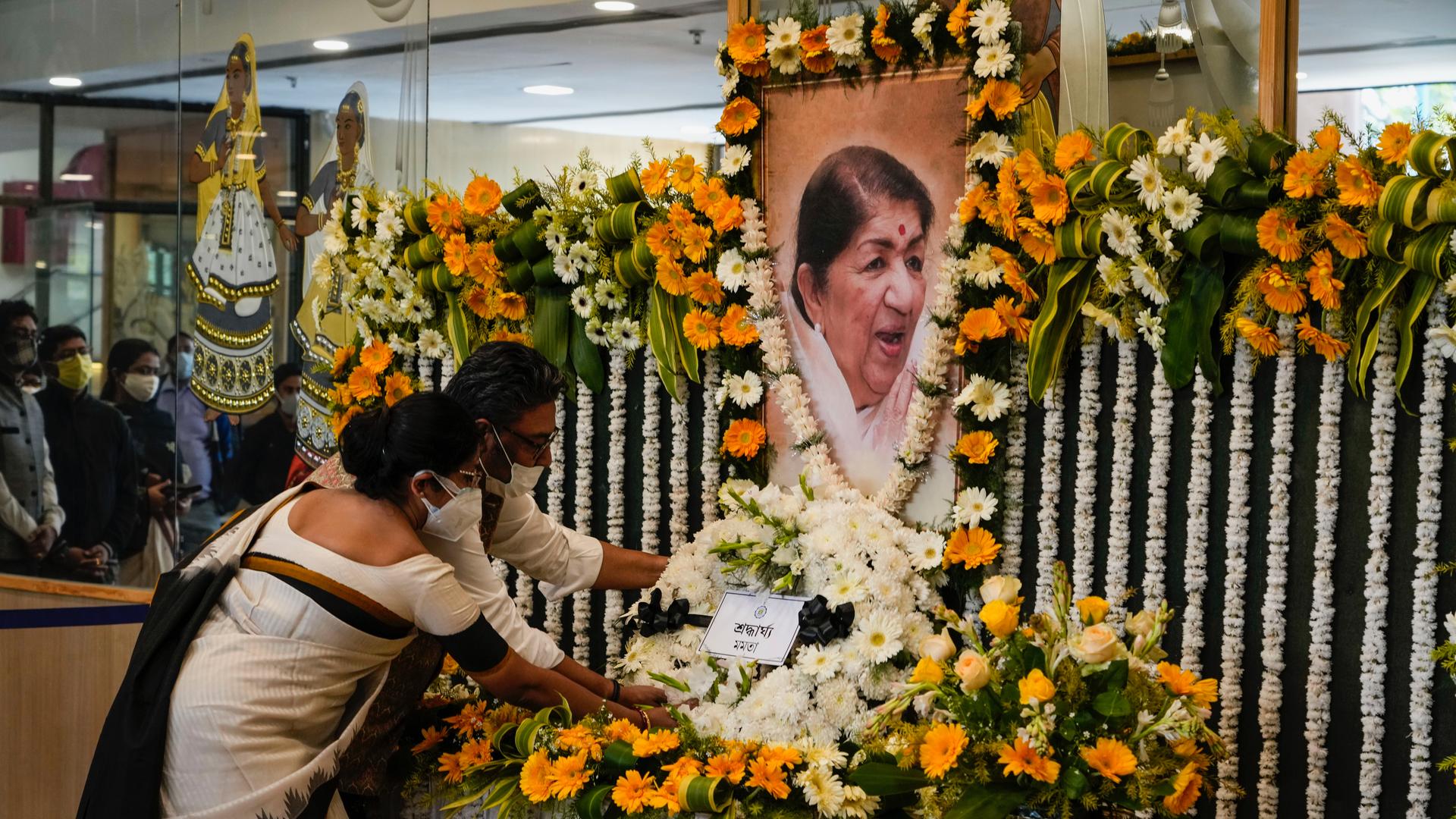Over the past couple of days, India has been in mourning for Lata Mangeshkar, known as the Nightingale of India, who died on Sunday at the age of 92 after a seven-decadeslong career in music.
Tributes flooded social media and her songs were on the radio all weekend while people across the world shared memories of the Queen of Melody. Mangeshkar was cremated with full state honors in Mumbai on Sunday, a funeral attended by film and music luminaries as well as Prime Minister Narendra Modi.
“There never was anyone before her. There isn’t anyone today, and there will never be another tomorrow. It’s not only India, the world has lost a great, great gem of an artist.”
“There never was anyone before her. There isn’t anyone today, and there will never be another tomorrow,” composer Lalit Pandit said. “It’s not only India, the world has lost a great, great gem of an artist.”
Mangeshkar was born in 1929 into a musical family. She was acting and singing by the age of 5. When she was 13, her father unexpectedly died, and she was thrust into the professional world, first as an actor who also sang, and then, exclusively as a singer who dubbed songs behind the scenes, a profession known as playback singing in India.
Related: India postpones in-school learning as omicron surges
In 1942, Mangeshkar recorded her first song for a Marathi-language film and in 2019, her last release was a tribute to the Indian army. In the interim, Mangeshkar sang more than 5,000 songs in 36 languages, worked on more than 1,000 movies and gave live shows across the world.
She was known for perfectionism and getting it right in just a few takes even when songs were recorded with live orchestras.
Writer and film buff Jerry Pinto recalled a story from her early days: A famous actor of the 1940s said her voice was too “small town,” that it smelled of daal-bhat — rice and lentil soup, he said. But Mangeshkar, instead of taking that as an insult, took it as a challenge and went and worked on her Urdu diction so that she was flawless in diction, he said.
Over the years, she saw every genre and style of music come and go — from classically tinged music to disco and pop. She gave voice to songs of valor and romance, exultation and despair, heartbreak and hope.
“She had an aura,” according to music director Pandit whose association with the Mangeshkar family goes back a generation.
As a child, he sang with Mangeshkar and their fathers knew each other. He said that when he grew up and she was to sing his songs, he was understandably nervous — she was already a legend.
“She was the best singer in the world.”
Related: Haunted India: A new ghost compendium features 700 creatures from A to Z
They went on to collaborate on some of the most popular songs of the 1990s and 2000s, including the hit films “Dilwale Dulhania Le Jayenge” and “Kabhi Khushi Kabhi Gham.”
“There was not only music, but her knowledge, her memory, her sense of humor … And she had different hobbies. She was a photographer, she loved wildlife, good food and she loved cricket.”
“There was not only music, but her knowledge, her memory, her sense of humor … And she had different hobbies,” he added. “She was a photographer, she loved wildlife, good food and she loved cricket.”
She was also active on social media, often taking to Twitter to comment on a cricket match or a good movie.
Along with musicians and the film fraternity, cricketers and politicians from India and even Pakistan have paid tribute to her. Young singers have been sharing musical tributes and covers on social media. Fans have collectively remembered how her songs were the soundtrack to milestones in their lives.
Award-winning sand sculptor Sudarsan Pattnaik has been a superfan for more than 30 years. Every September, on Mangeshkar’s birthday, he said he would sculpt something in her honor on the beach at Puri, a holy site in the state of Odisha.
When he heard she was hospitalized for COVID-19 in January, Pattnaik was concerned.
“I went to our holy beach. I created a sculpture and prayed for her recovery.”
On learning of her passing, Pattnaik made a fresh sand sculpture with a giant vinyl LP and her likeness.
Film writer Pinto tried to put his finger on what made her so unique: “We never heard her breathing.”
Mangeshkar was known to have a range of three octaves and a piercing pitch-perfect soprano voice.
“Because the voice had been stripped of everything that was human, because it had been denatured in a way, because of its impossible, improbable octave, because of its pitch, it became completely human,” he said.
Along with winning every musical award in India, Mangeshkar also won India’s highest civilian award, the Bharat Ratna, as well as the Legion of Honor from France. She was a member of Parliament for six years.
Mangeshkar never married; she is survived by three sisters and a brother, all of whom are accomplished singers.
Our coverage reaches millions each week, but only a small fraction of listeners contribute to sustain our program. We still need 224 more people to donate $100 or $10/monthly to unlock our $67,000 match. Will you help us get there today?
